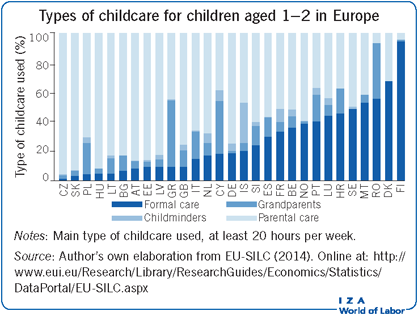Elevator pitch
Increasing population age and low fertility rates, which characterize most modern societies, compromise the balance between people who can participate in the labor market and people who need care. This is a demographic and social issue that is likely to grow in importance for future generations. It is therefore crucial to understand what factors can positively influence fertility decisions. Policies related to the availability and costs of different kinds of childcare (e.g. formal care, grandparents, childminders) should be considered and promoted after an evaluation of their effects on the probability of women having children.

Key findings
Pros
High availability and low costs of formal childcare positively influence families’ decisions to have children.
Having grandparents to help with childcare increases the probability of having children.
The availability of immigrants who work as childminders encourages more-educated women to have more children.
Formal childcare has positive effects on mothers’ working decisions.
Cons
Because access to acceptable childcare can cause women to work more, which may reduce their likelihood of having more children, the net effect of better childcare availability on fertility may be lower than expected.
The provision of childcare for young children is very expensive.
The availability of grandparents to provide childcare may be limited: old grandparents may be sick, young grandparents may still work, and grandparents could have multiple grandchildren from different adult children for whom to care.